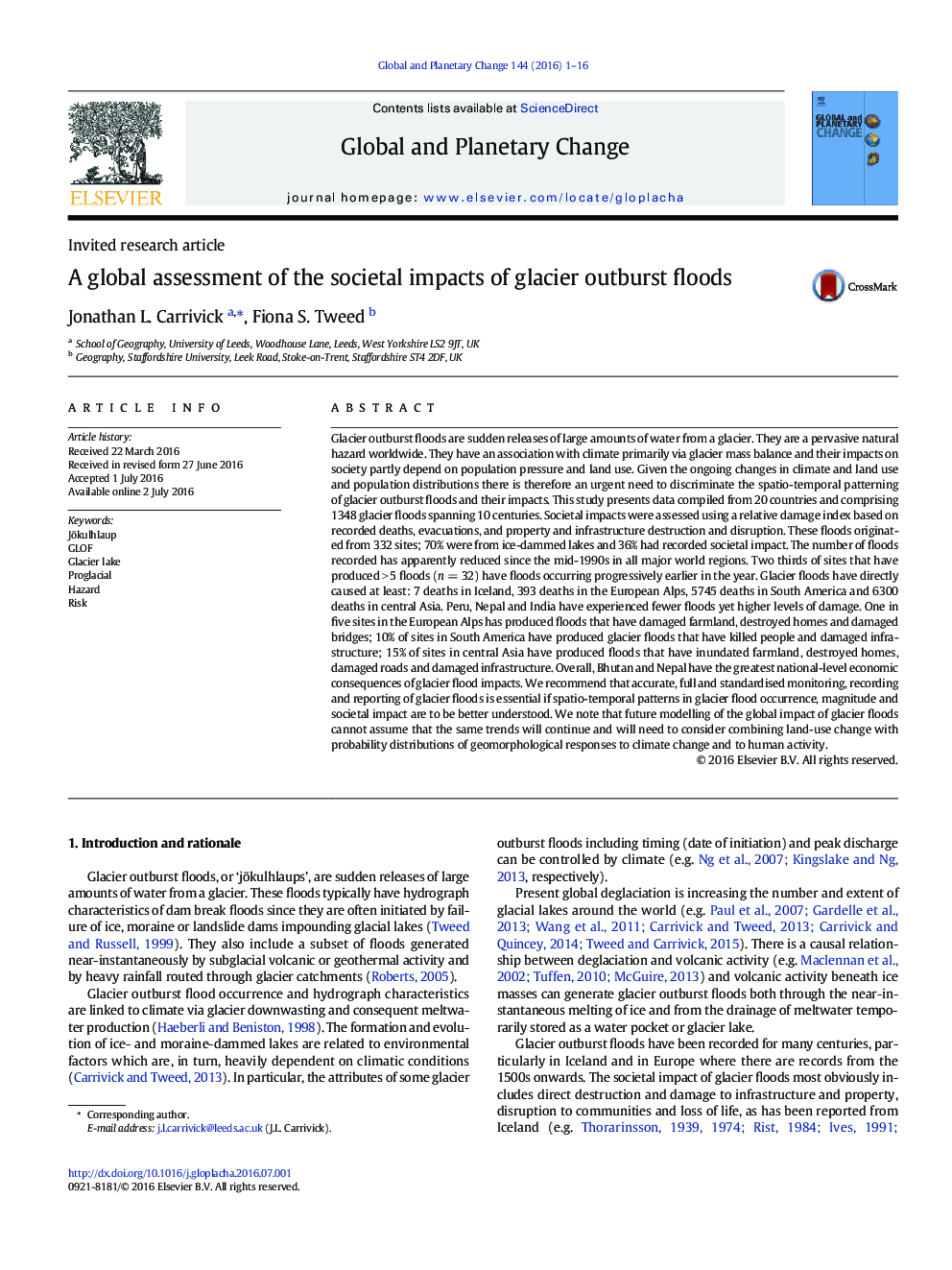| کد مقاله | کد نشریه | سال انتشار | مقاله انگلیسی | نسخه تمام متن |
|---|---|---|---|---|
| 4463265 | 1621638 | 2016 | 16 صفحه PDF | دانلود رایگان |
• 1348 floods from 332 sites, and 36% of these sites have recorded societal impact.
• Over 12,000 deaths recorded globally due to glacier floods.
• Recurrence intervals calculated based on volume, discharge and damage.
• Damage type and index determined per event, per country and per major world region
Glacier outburst floods are sudden releases of large amounts of water from a glacier. They are a pervasive natural hazard worldwide. They have an association with climate primarily via glacier mass balance and their impacts on society partly depend on population pressure and land use. Given the ongoing changes in climate and land use and population distributions there is therefore an urgent need to discriminate the spatio-temporal patterning of glacier outburst floods and their impacts. This study presents data compiled from 20 countries and comprising 1348 glacier floods spanning 10 centuries. Societal impacts were assessed using a relative damage index based on recorded deaths, evacuations, and property and infrastructure destruction and disruption. These floods originated from 332 sites; 70% were from ice-dammed lakes and 36% had recorded societal impact. The number of floods recorded has apparently reduced since the mid-1990s in all major world regions. Two thirds of sites that have produced > 5 floods (n = 32) have floods occurring progressively earlier in the year. Glacier floods have directly caused at least: 7 deaths in Iceland, 393 deaths in the European Alps, 5745 deaths in South America and 6300 deaths in central Asia. Peru, Nepal and India have experienced fewer floods yet higher levels of damage. One in five sites in the European Alps has produced floods that have damaged farmland, destroyed homes and damaged bridges; 10% of sites in South America have produced glacier floods that have killed people and damaged infrastructure; 15% of sites in central Asia have produced floods that have inundated farmland, destroyed homes, damaged roads and damaged infrastructure. Overall, Bhutan and Nepal have the greatest national-level economic consequences of glacier flood impacts. We recommend that accurate, full and standardised monitoring, recording and reporting of glacier floods is essential if spatio-temporal patterns in glacier flood occurrence, magnitude and societal impact are to be better understood. We note that future modelling of the global impact of glacier floods cannot assume that the same trends will continue and will need to consider combining land-use change with probability distributions of geomorphological responses to climate change and to human activity.
Journal: Global and Planetary Change - Volume 144, September 2016, Pages 1–16
